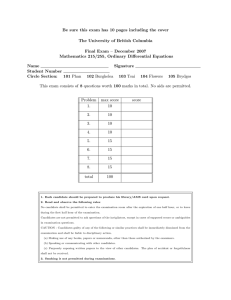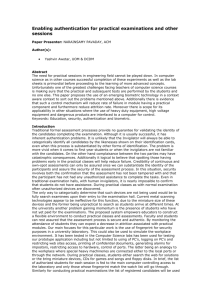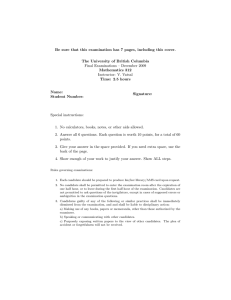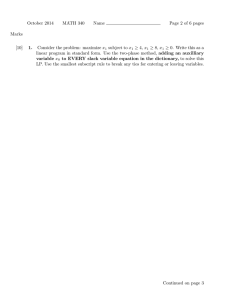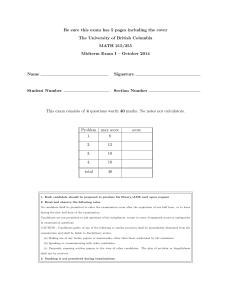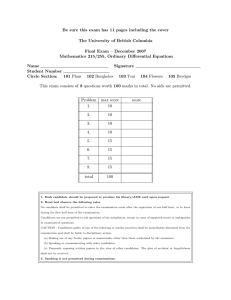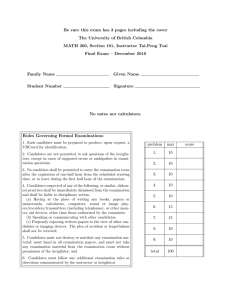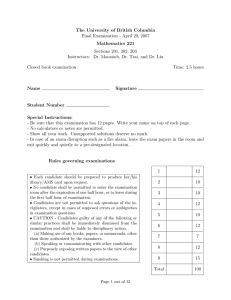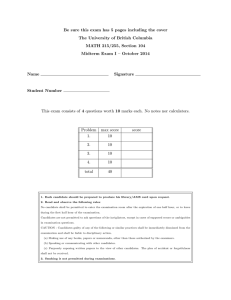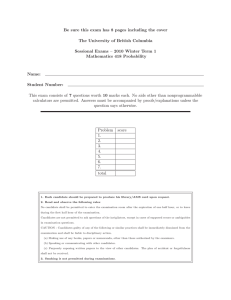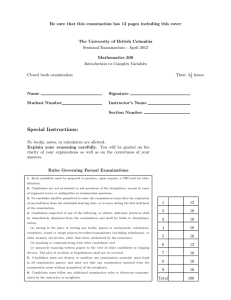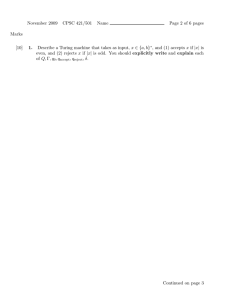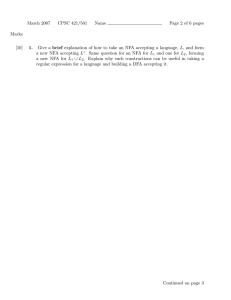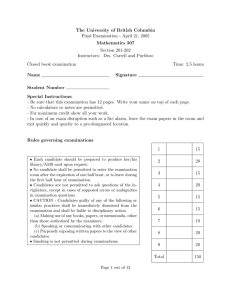FINAL EXAM Math 300 Section 101 December 8, 2009
advertisement
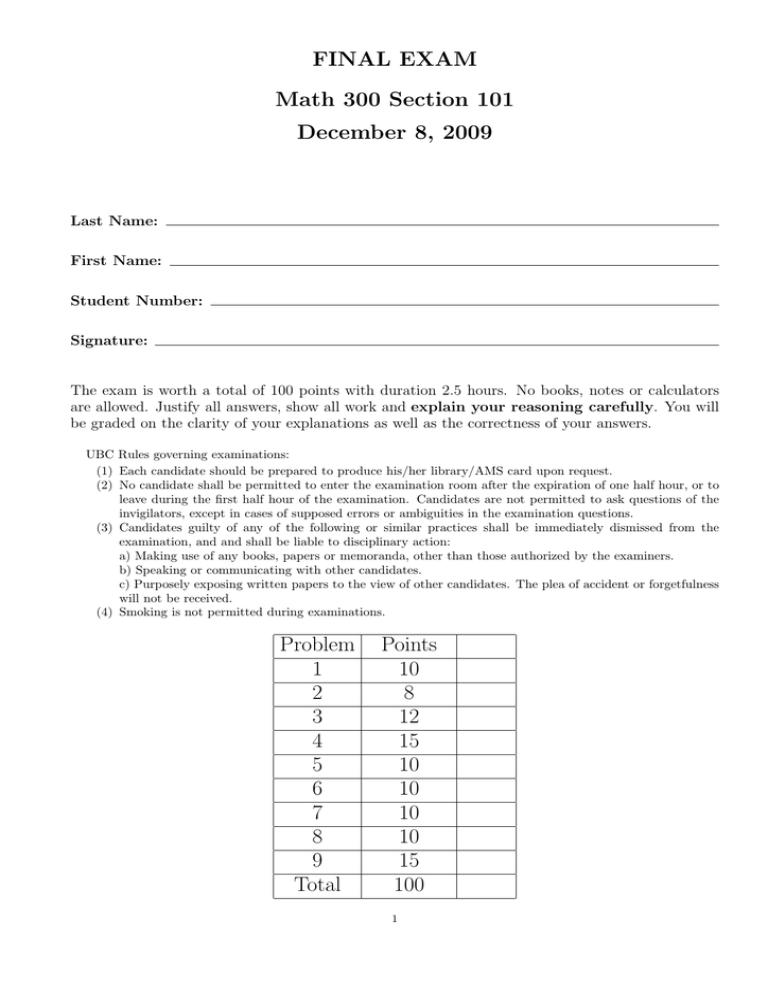
FINAL EXAM
Math 300 Section 101
December 8, 2009
Last Name:
First Name:
Student Number:
Signature:
The exam is worth a total of 100 points with duration 2.5 hours. No books, notes or calculators
are allowed. Justify all answers, show all work and explain your reasoning carefully. You will
be graded on the clarity of your explanations as well as the correctness of your answers.
UBC Rules governing examinations:
(1) Each candidate should be prepared to produce his/her library/AMS card upon request.
(2) No candidate shall be permitted to enter the examination room after the expiration of one half hour, or to
leave during the first half hour of the examination. Candidates are not permitted to ask questions of the
invigilators, except in cases of supposed errors or ambiguities in the examination questions.
(3) Candidates guilty of any of the following or similar practices shall be immediately dismissed from the
examination, and and shall be liable to disciplinary action:
a) Making use of any books, papers or memoranda, other than those authorized by the examiners.
b) Speaking or communicating with other candidates.
c) Purposely exposing written papers to the view of other candidates. The plea of accident or forgetfulness
will not be received.
(4) Smoking is not permitted during examinations.
Problem
1
2
3
4
5
6
7
8
9
Total
Points
10
8
12
15
10
10
10
10
15
100
1
Problem 1 (10 points) Find all complex numbers z for which cos z = 2. Write your answers in the
form x + iy where x and y are real.
2
Problem 2 (8 points) Find
Z
|z|2 dz,
Γ
where Γ is the contour consisting of the directed line segment from i to 1 + i, followed by the
directed line segment from 1 + i to 1.
3
Problem 3 (12 points) Describe exactly the set S of complex numbers z for which the power series
∞
X
nz n−1
n=2
converges, and find its sum for all z in S.
4
Problem 4 (15 points) Define the function
ez sin z
.
z3
(a) Find three nonzero terms of the Laurent series of f (z) in the domain {z : z 6= 0}.
f (z) =
(b) What kind of singularity does f (z) have at z = 0?
(c) Find
Z
C
f (z) dz,
where C is the positively oriented circle {z : |z| = 1}.
5
Problem 5 (10 points) Find all possible values of the integral
Z
z+3
dz
Γ z(z − 3)
for simple closed contours Γ where 0 and 3 are not on Γ.
6
Problem 6 (10 points) If f (z) and g(z) are functions analytic at z = 0, and g ′ (0) 6= 0, then what
type of singularity does the function
f (z) − f (0)
h(z) =
g(z) − g(0)
have at z = 0?
7
Problem 7 (10 points) Suppose that f is an analytic function in a domain D, with real and imaginary
parts u(z) and v(z), and that g(t) is a real function of one real variable t which is differentiable for
all t. If v(z) = g(u(z)) for all z in D, then show that f is constant in D.
8
Problem 8 (10 points) Suppose that f (z) is analytic everywhere in C except z = 1, and that
Z
C
f (z) dz = 6πi,
where C is the positively oriented circle {z : |z − 1| = 2}. Find
Z
C
z 2 f ′′ (z) dz. (Hint: Use residues!)
9
Problem 9 (15 points) (a) Use residue theory to find
Z ∞
x
p.v.
dx.
2
−∞ (x + 2x + 5)2
(b) Why can’t the expanding semicircular contour method as presented in class and the textbook
be used to evaluate
Z ∞
x3
dx?
p.v.
−∞ (x2 + 2x + 5)2
Be detailed; specify what aspect of the method fails for this function.
10
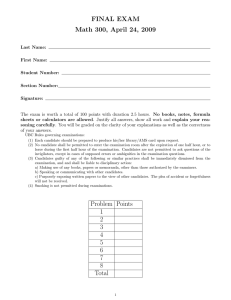
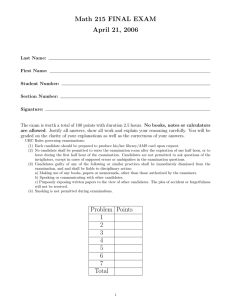
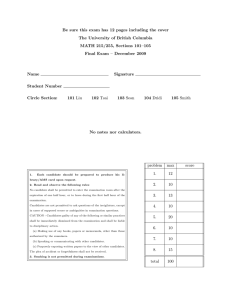
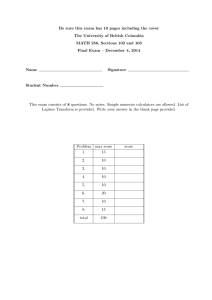
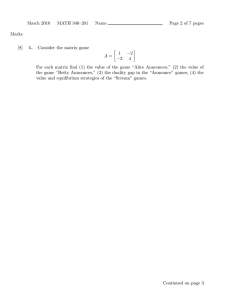
![December 2011 MATH 421/501–101 Name Page 2 of 12 pages Marks [8]](http://s2.studylib.net/store/data/011171305_1-a6ffda42c0439899d0b8a4b2b5c15c37-300x300.png)
